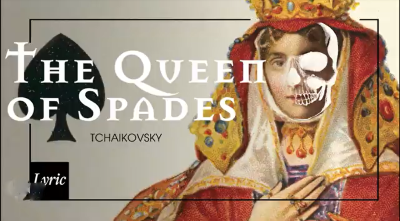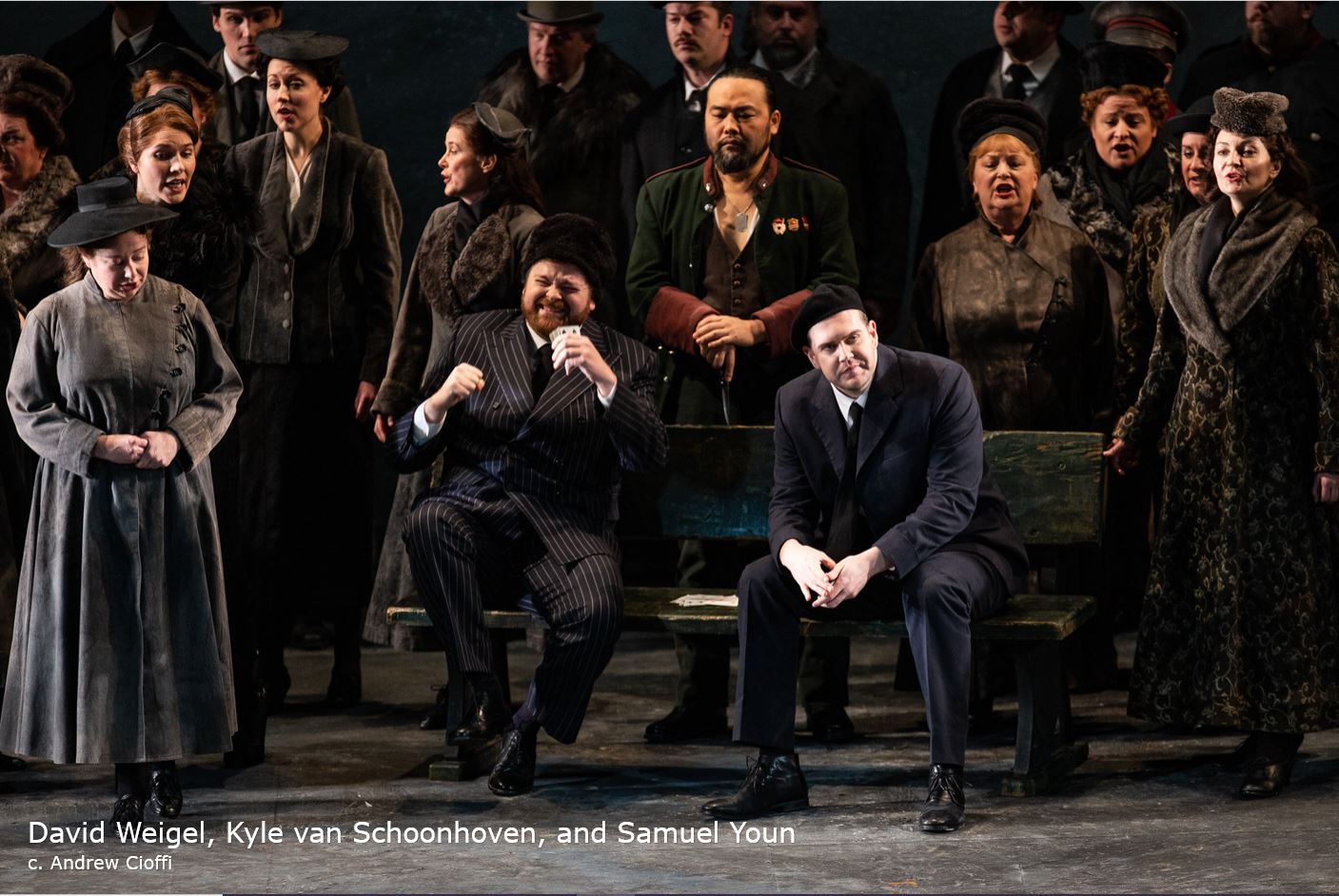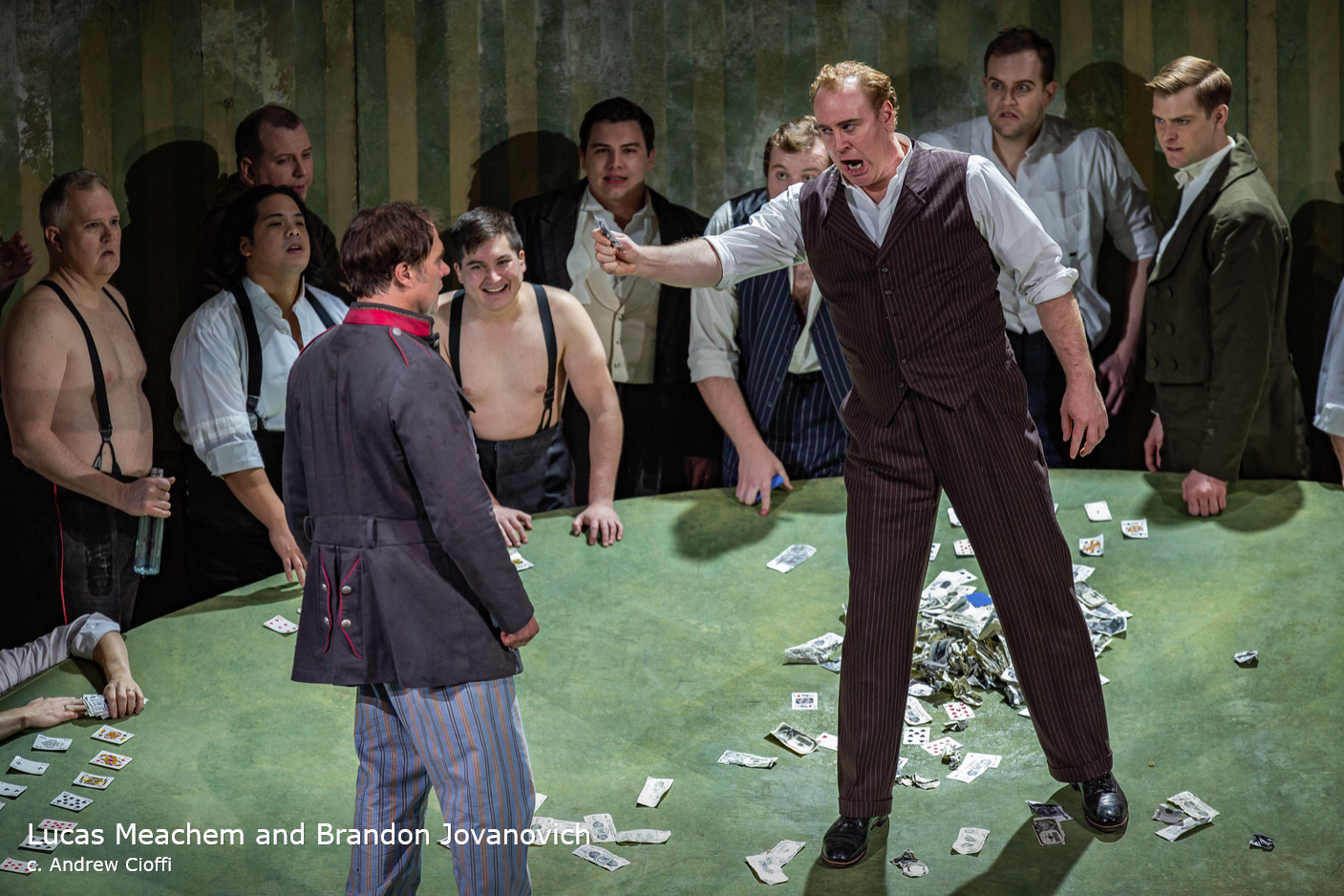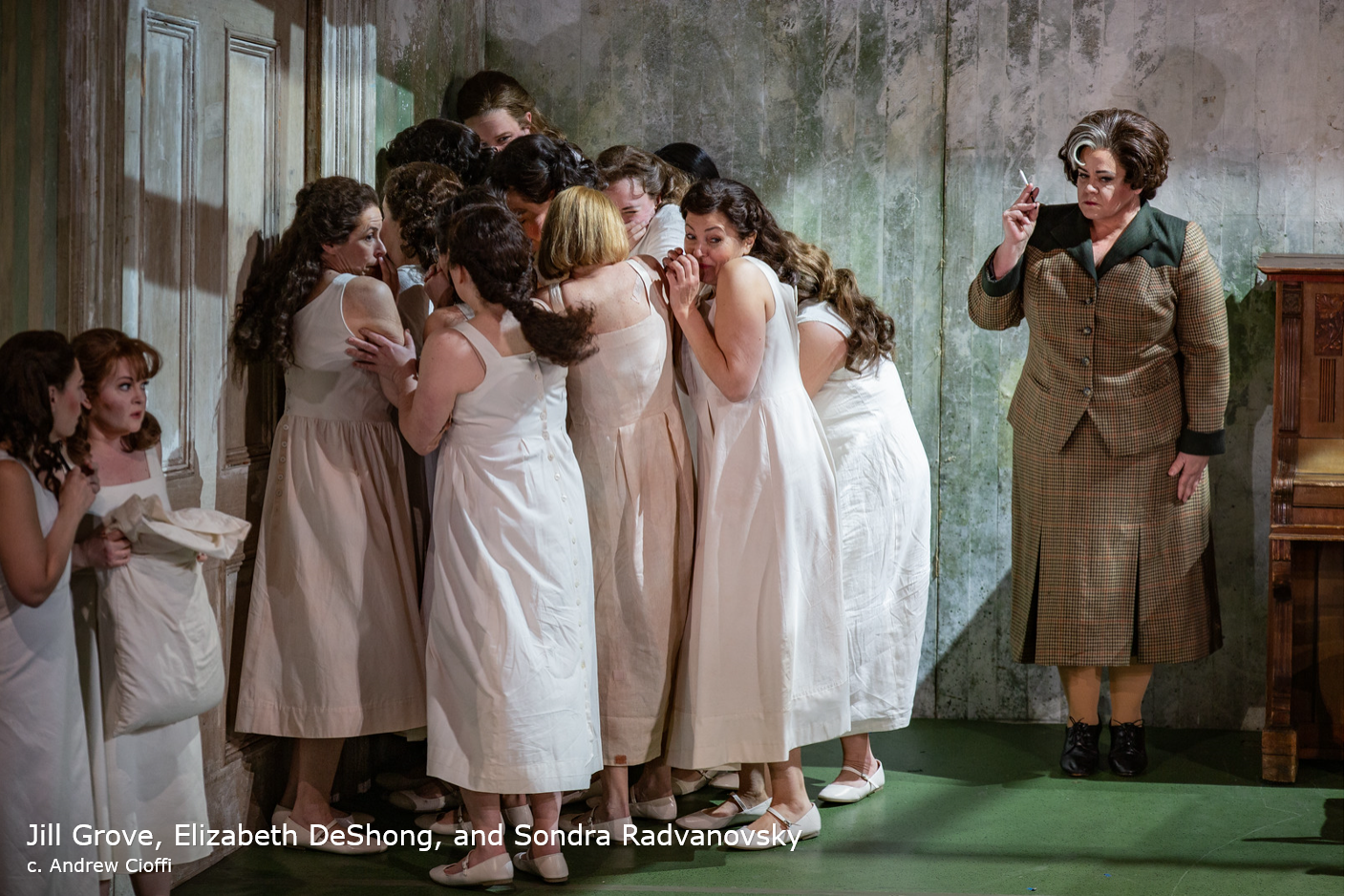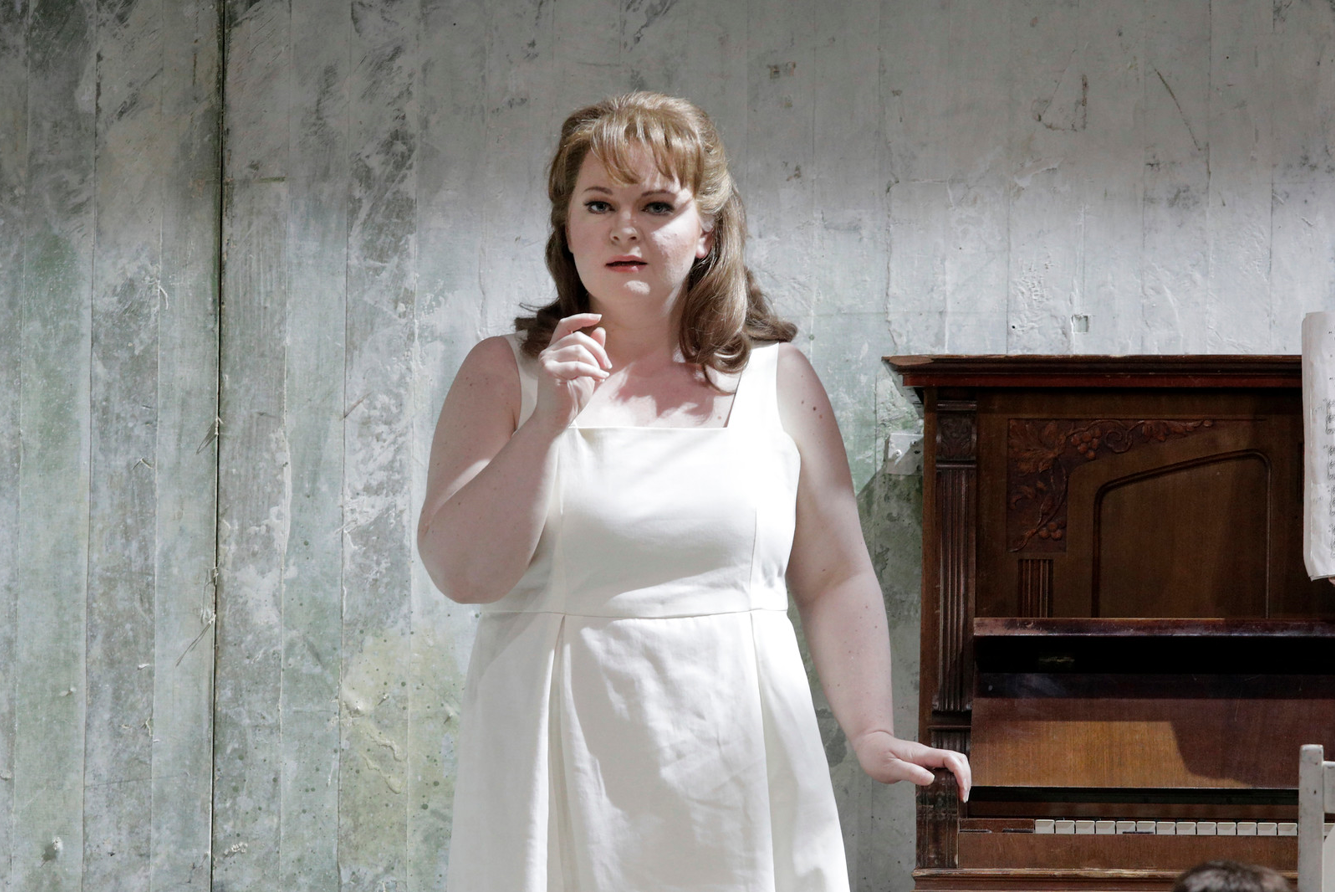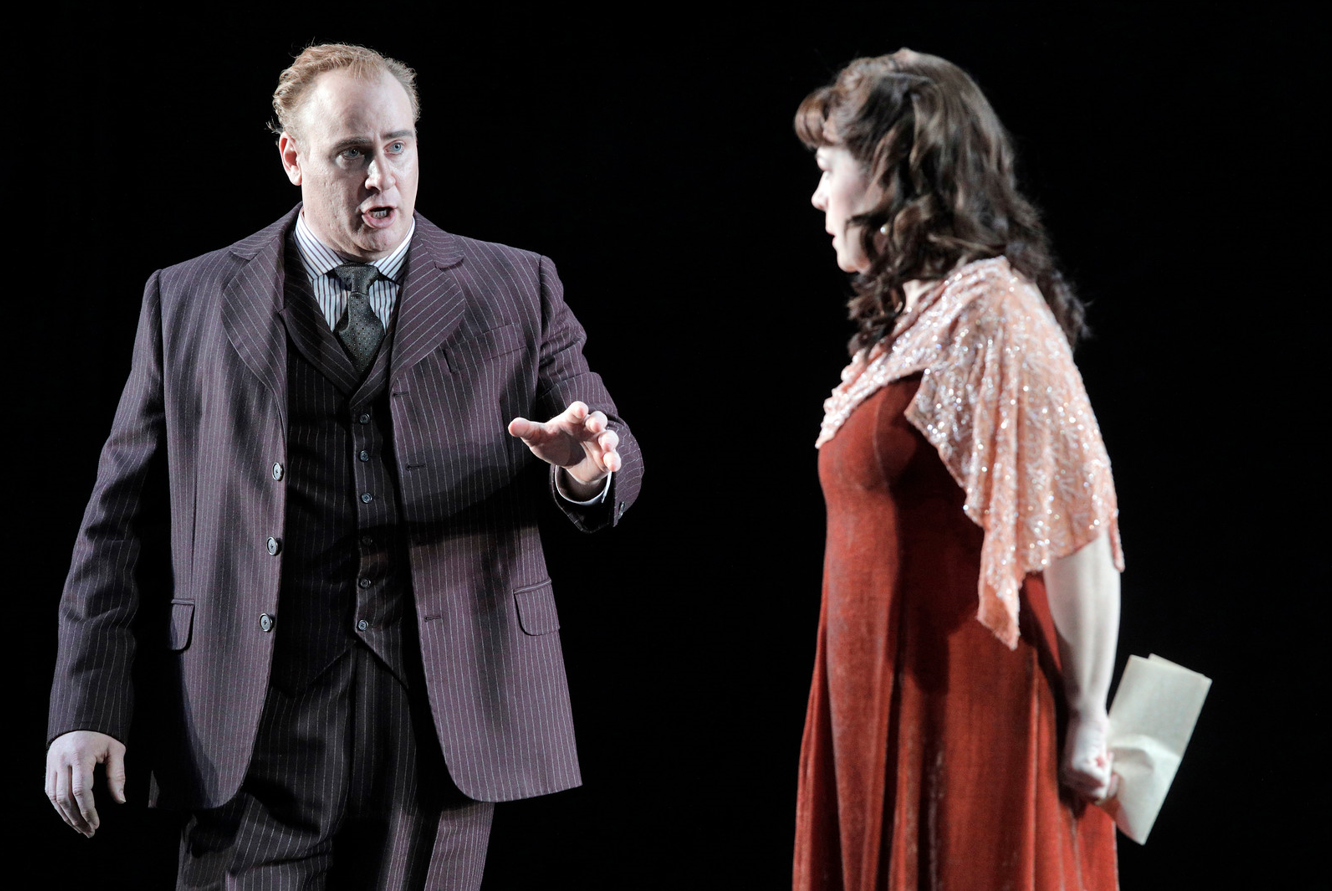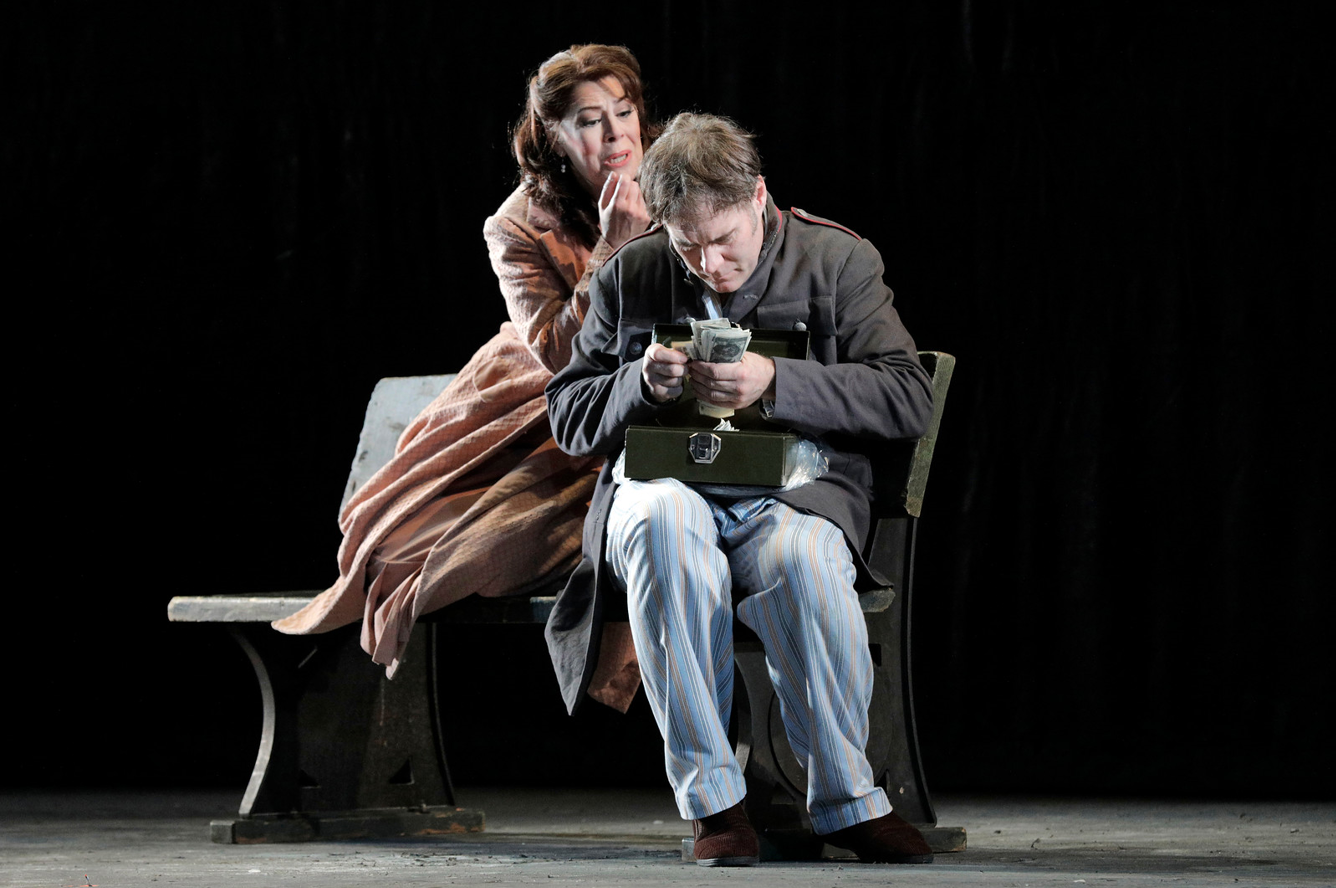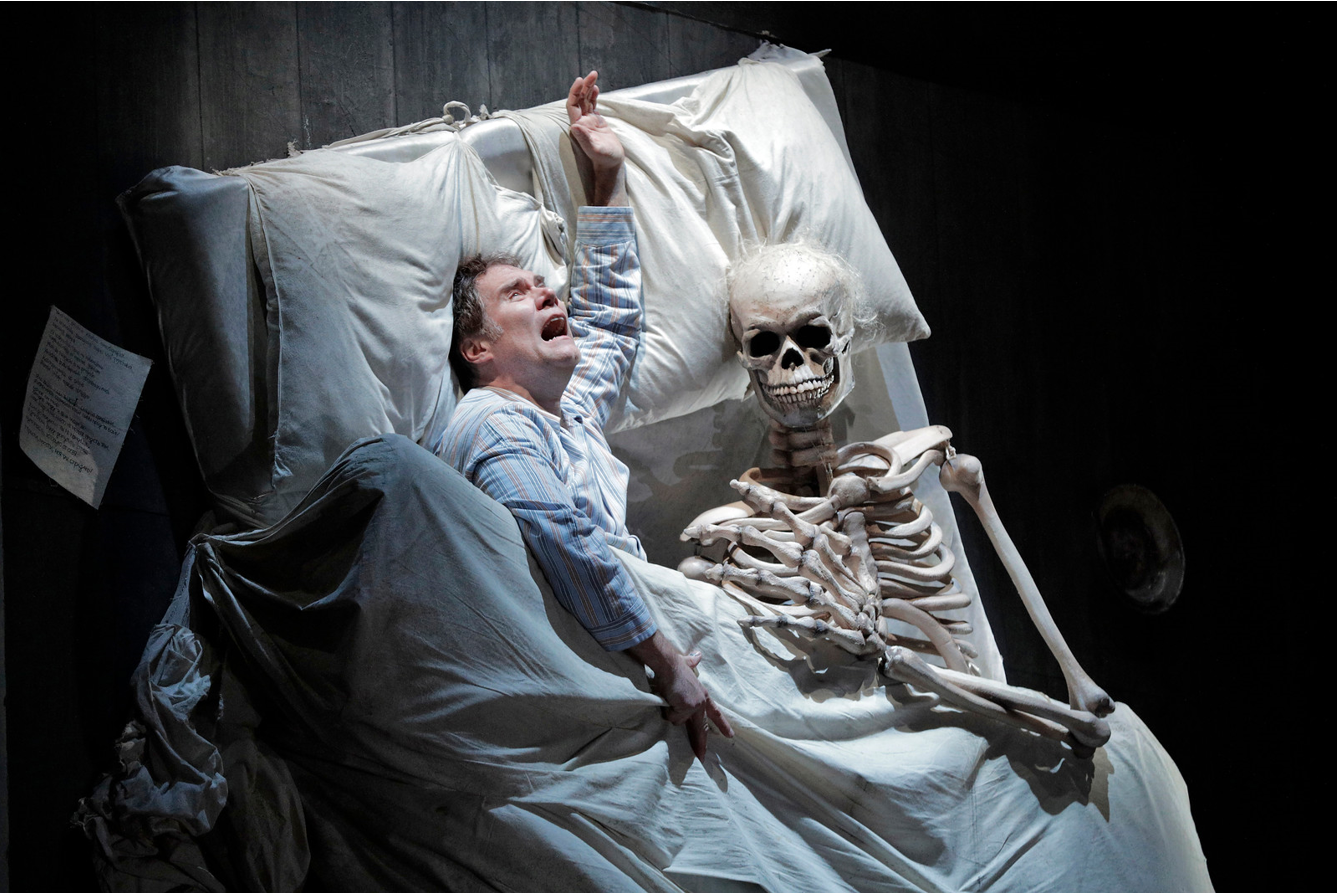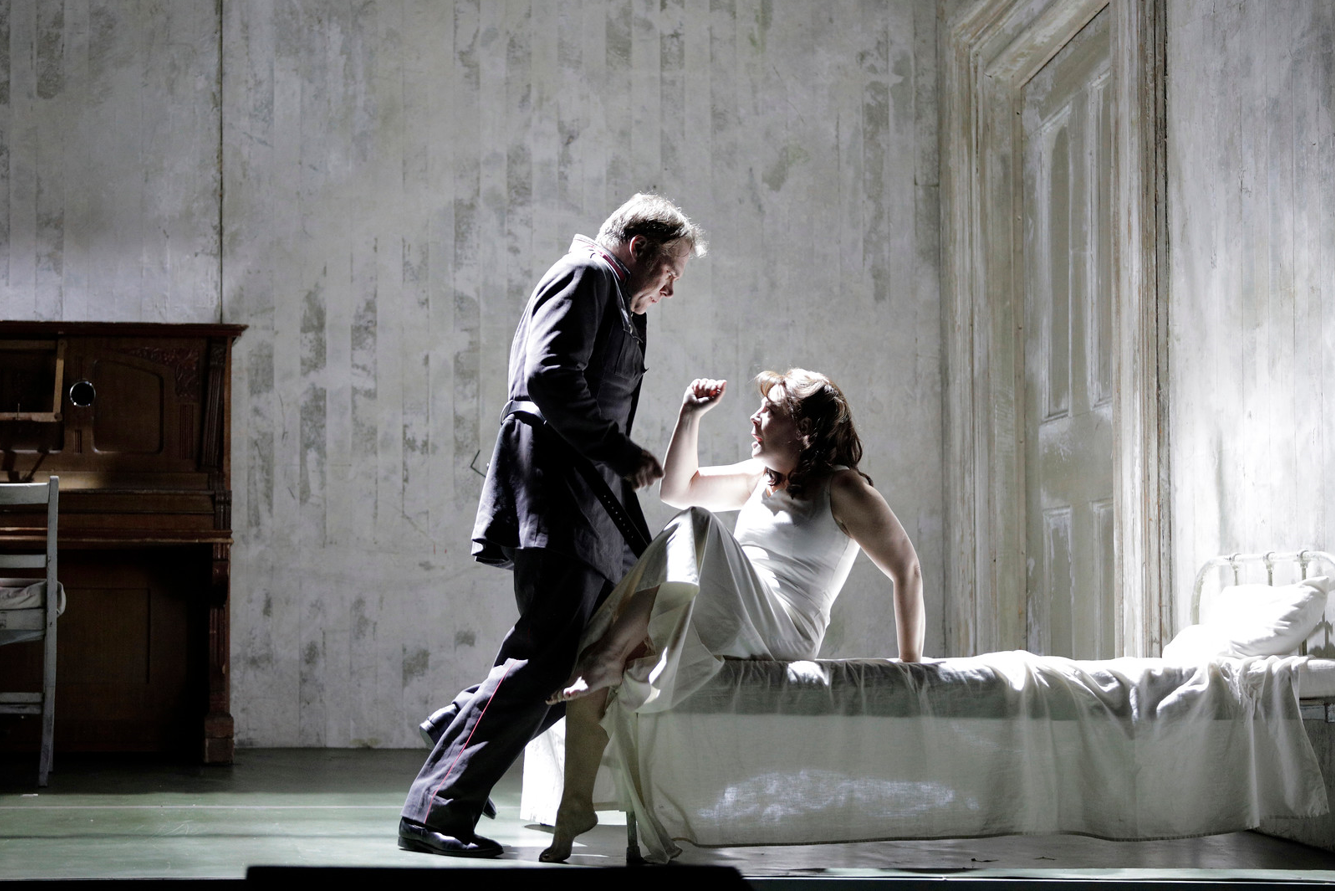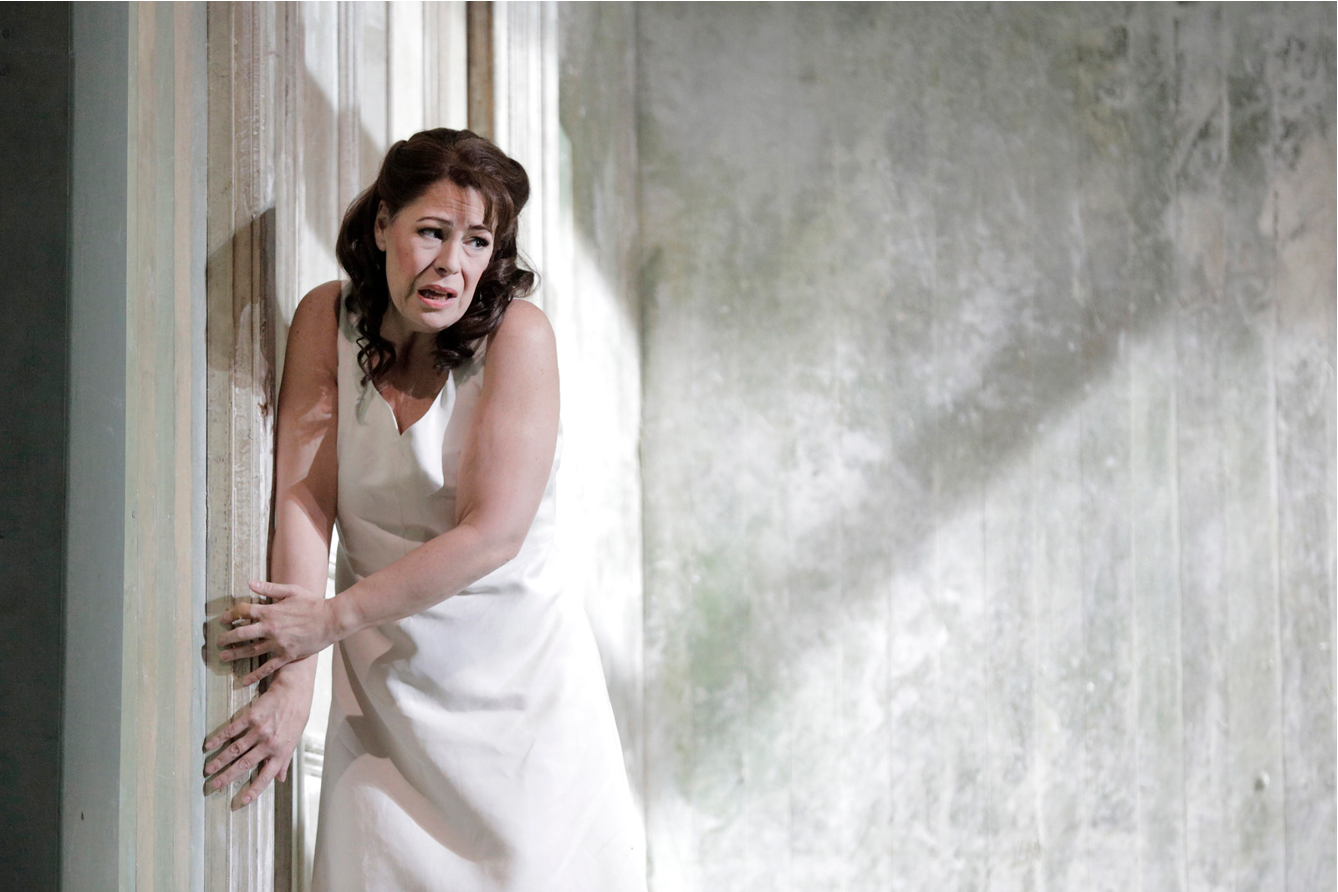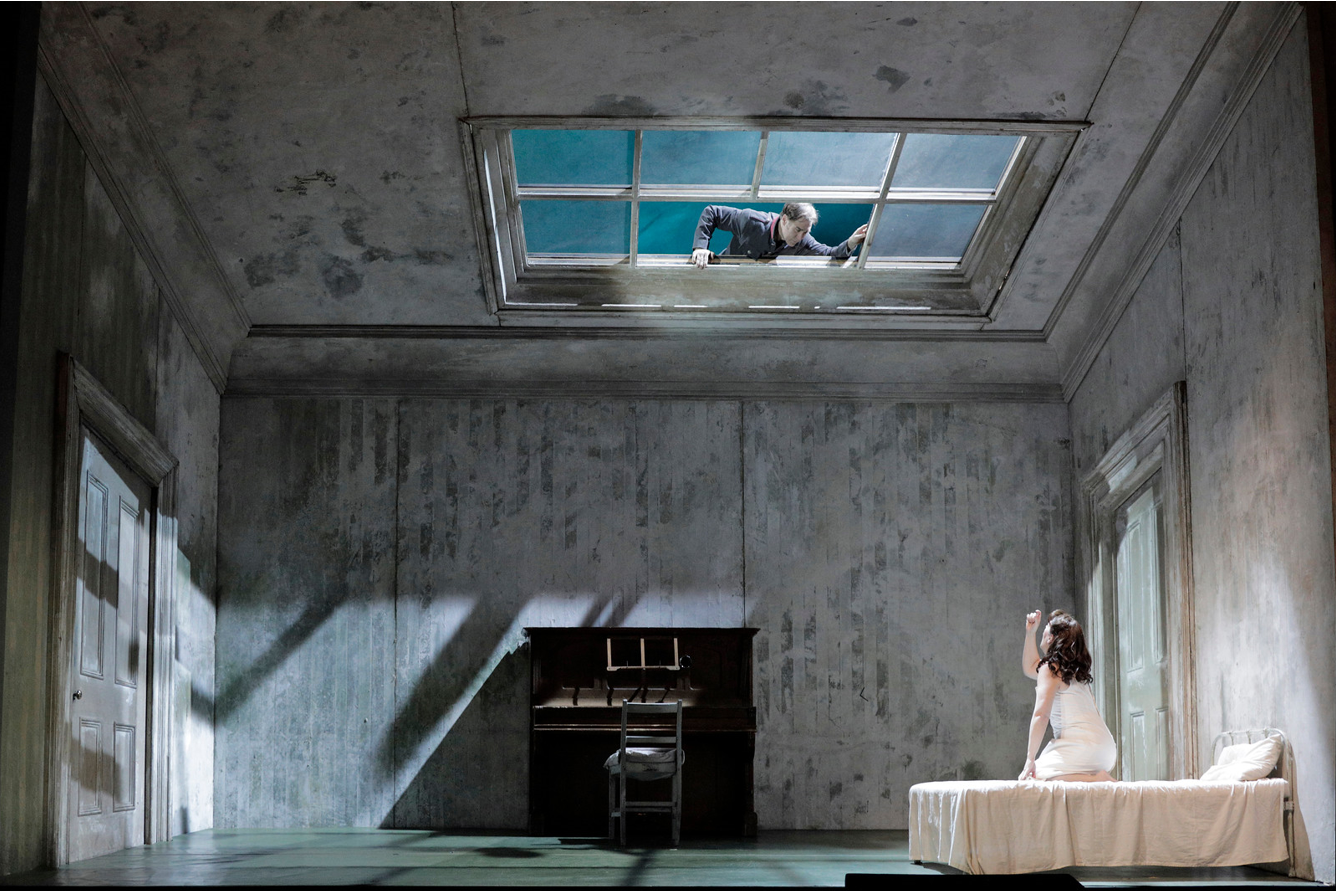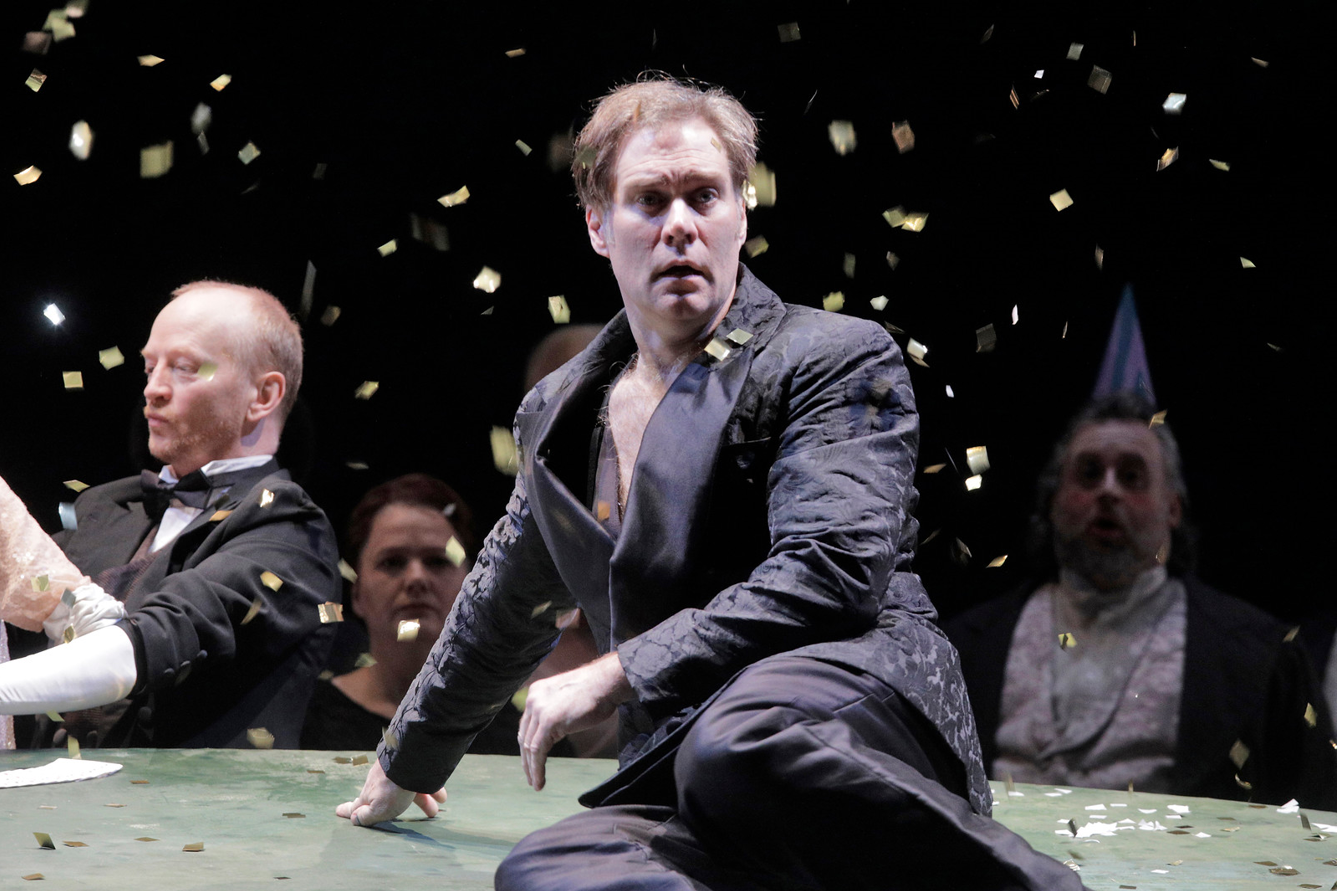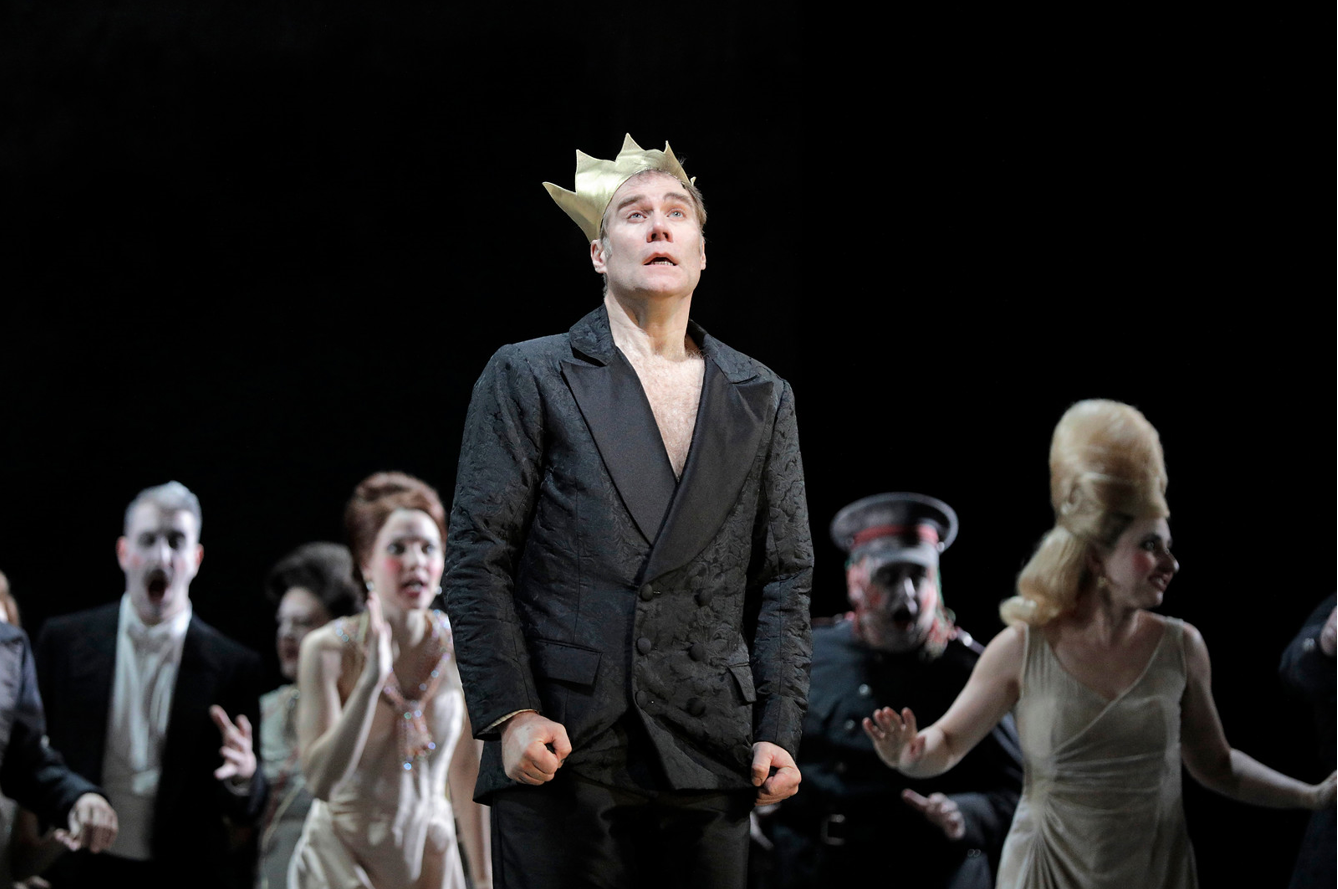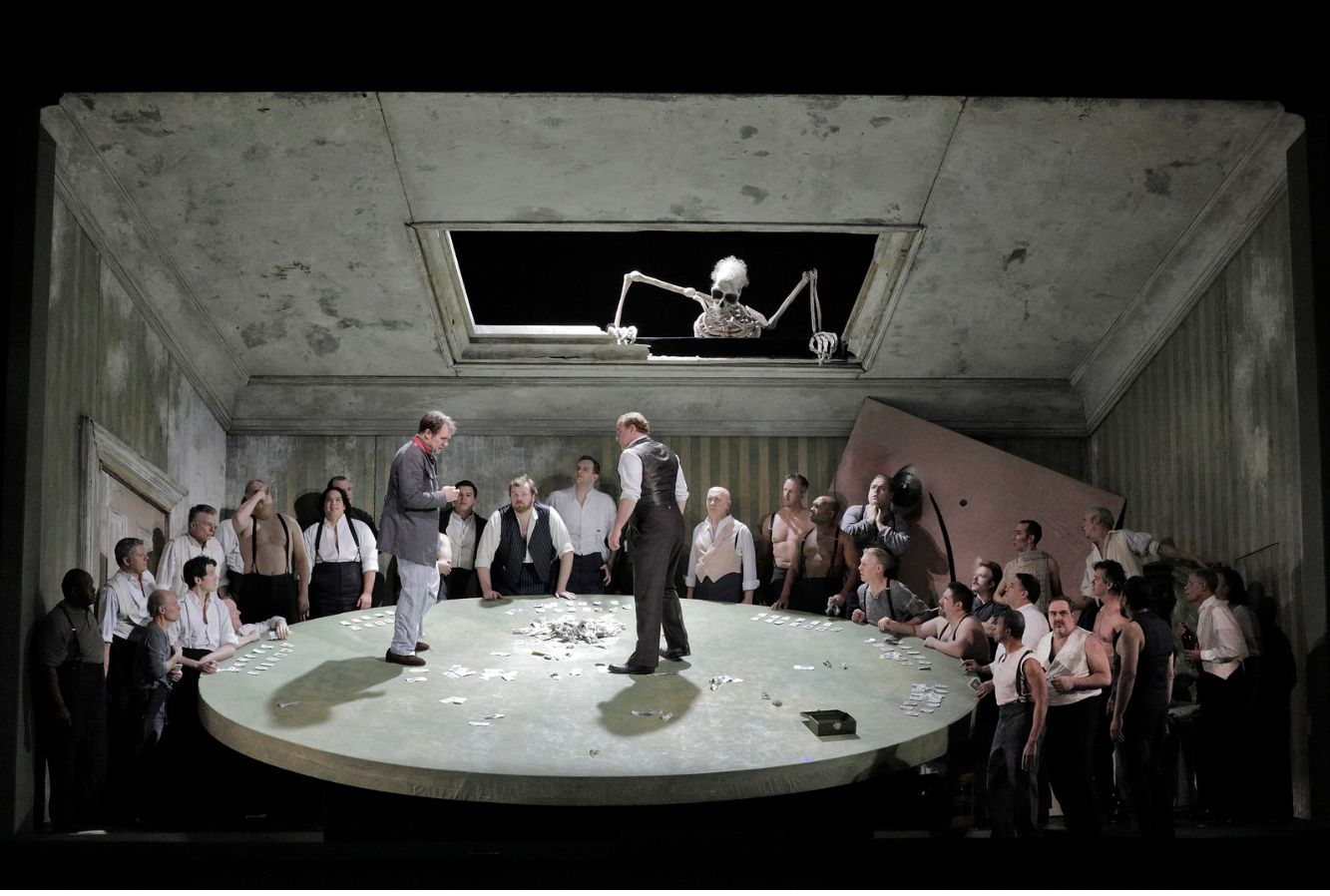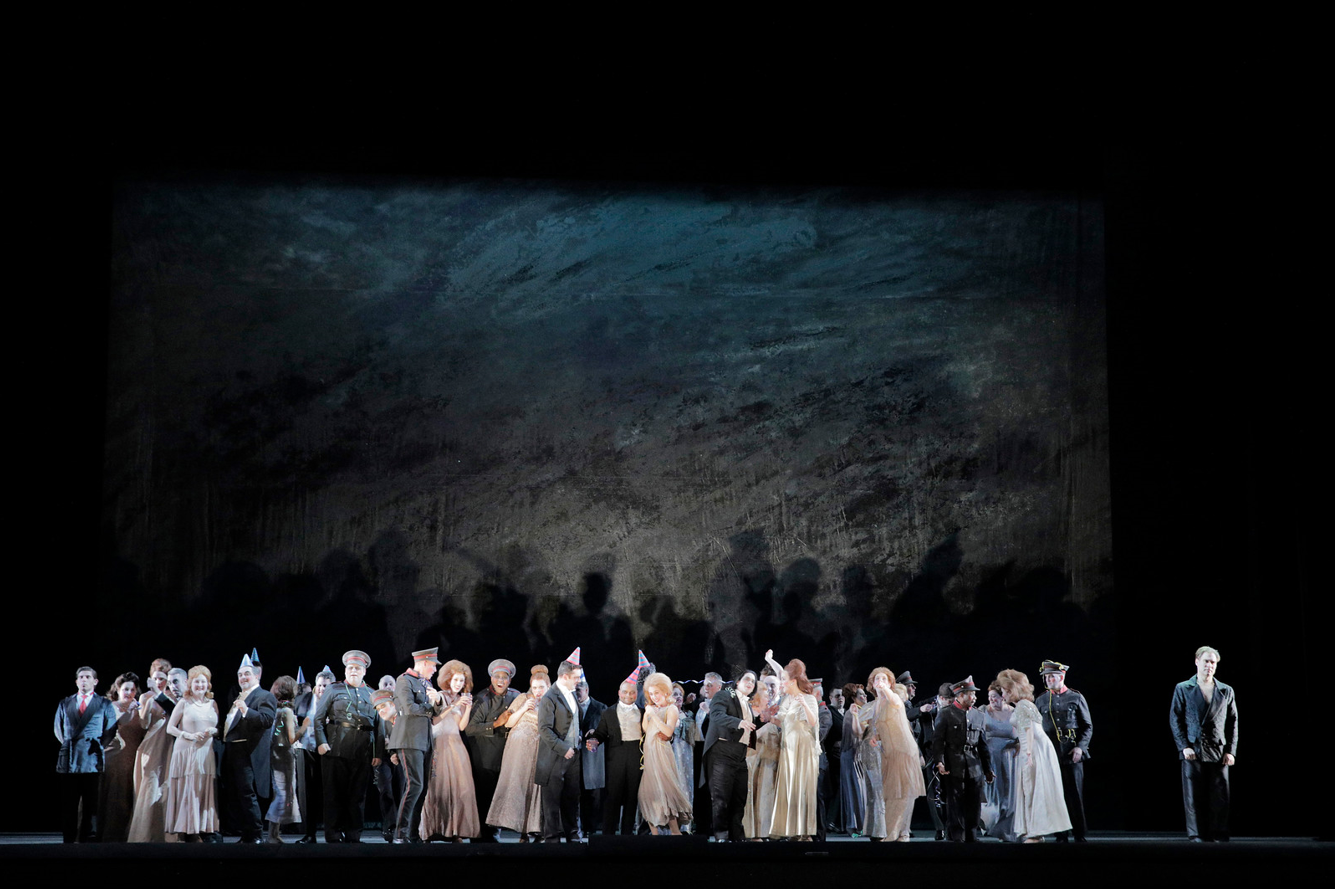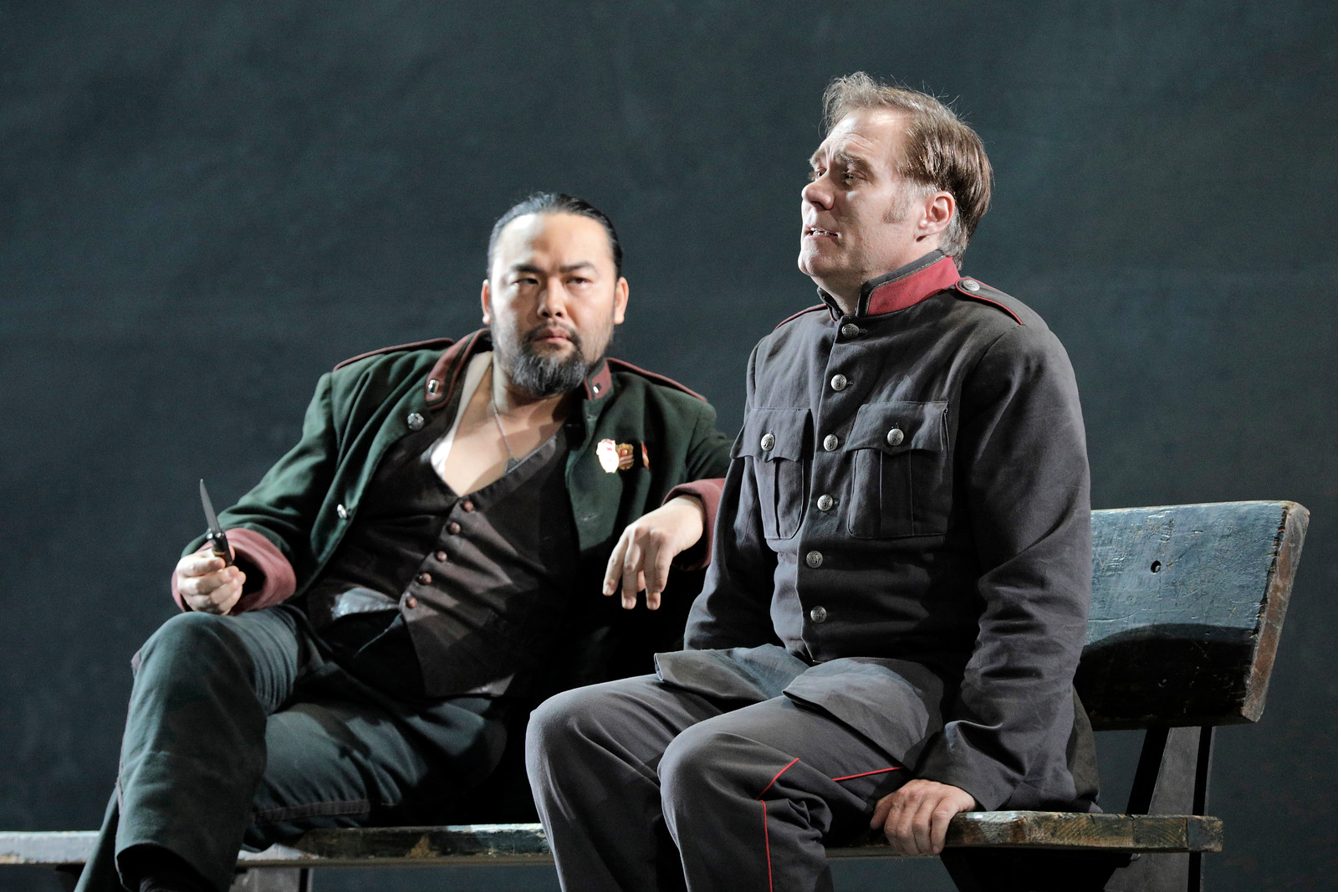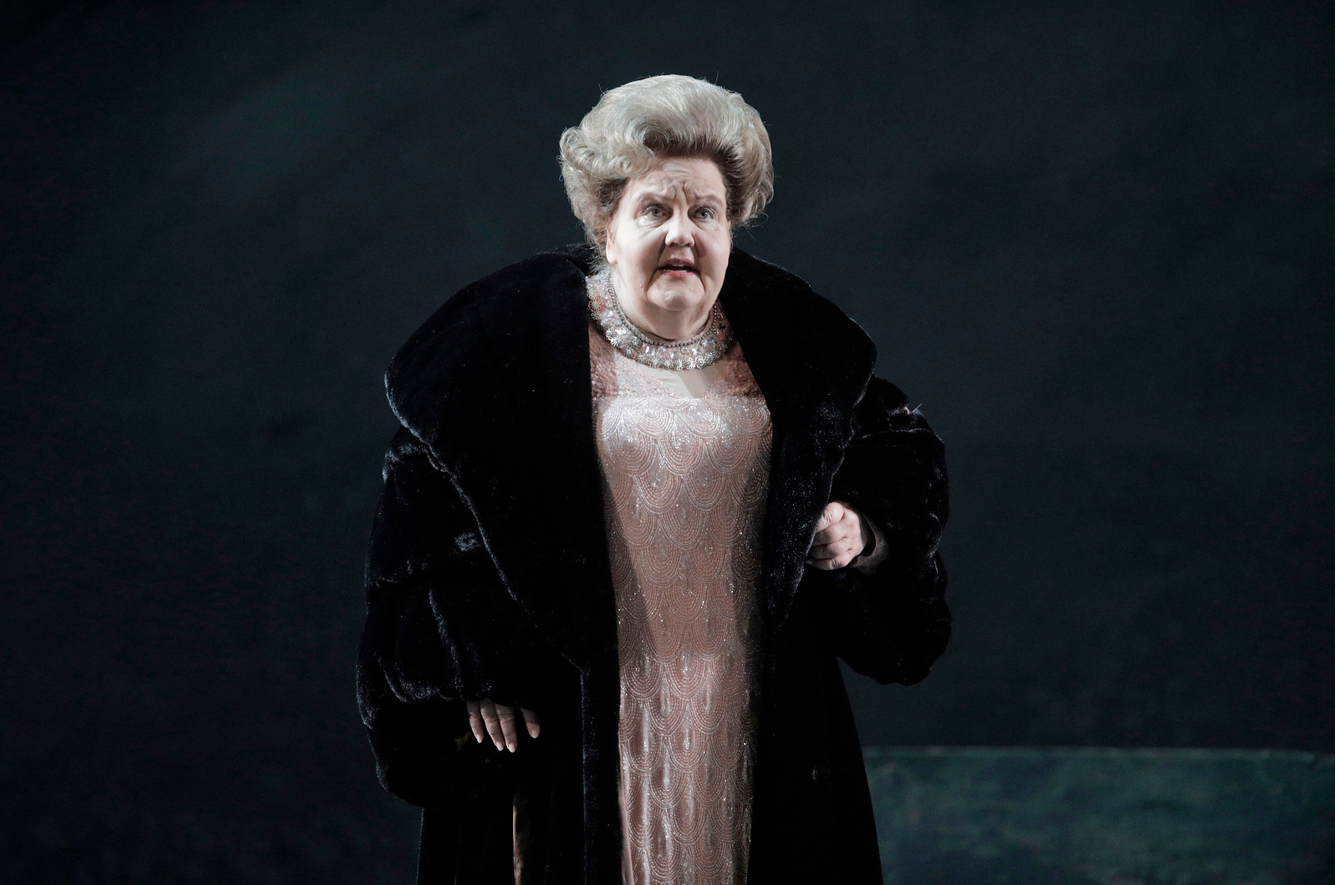WHAT A QUEEN!
Pyotr Ilyich Tchaikosky’s ballets Swan Lake and The Nutcracker are both beloved and celebrated, yet his operas are scarcely known. Indeed, we don’t get much Russian opera at all, at least in Chicago. Lyric produced Tchaikovsky’s Eugene Onegin in 2017, while Chicago Opera Theatre produced his Iolanta in 2018 and Rachmaninoff’s Aleko in 2019. Next season Lyric is offering Stravinsky’s The Rake’s Progress. Thus, we’re lucky to get one Russian opera per year.
The Queen of Spades (Pikovaya dama), which is the tenth of eleven operas Tchaikovsky composed, is a long, complex, and varied work. Comprised of three acts, it includes ballet and folk songs, as well as the usual repertoire of choruses, solos, duets, etc. In this new-to-Chicago production, director Richard Jones replaces the ballet with puppetry. Together with John Macfarlane’s imaginative, yet drab, set and costume designs, the effect is rather Tim Burton-esque, but without the magic. Tchaikovsky’s richly composed music shines through nevertheless, but the already dark story is rendered unaccountably weirder.
Based on a novella of the same name by Alexander Pushkin, the libretto by Tchaikovsky’s brother Modest centers on the tragic romance between Gherman and Lisa. Though a nobody in terms of social status and wealth, Gherman pines for noble Lisa, the granddaughter of a countess. When Count Tomsky reveals that Lisa is engaged to Prince Yeletsky, Gherman vows to woo her for himself. In order to ensure his success, he must discover the countess’s secret of the three cards that will enable him to win a fortune through gambling. Though Gherman early gains Lisa’s heart, she despairs of gaining his because of Gherman’s obsession with the three cards and so commits suicide. Finally, when Gherman bets everything on the three cards and loses, he too takes his life. The losing card, of course, is the queen of spades, giving the opera its foreboding title.
Brandon Jovanovich and Sondra Radvanovsky, two Lyric audience favorites, fill the roles of Gherman and Lisa with magisterial artistry. Jovanovich plays the obsessed, descending-into-madness Gherman with high-strung rigidity, tension, and unease. His silky tone and flawless singing technique smoothes out many of the production’s rough edges, but perhaps no more so than during his Act III, Scene I solo. Here, Jovanovich remains captivating, despite the distracting set turned sideways so that we’re looking down on Gherman in his bed and the skeleton snuggling with him. In one of Jones’ worst direction choices, this giant skeleton replaces the countess’s ghost, provoking audience laughs rather than horror. And why is he sleeping with his lover’s dead grandmother? It makes no sense.
In addition to Jovanovich and Radvanovsky, the excellent cast also boasts Samuel Youn as Count Tomsky, Lucas Meachem as Prince Yeletsky, and Elizabeth DeShong as Lisa’s friend Pauline. The latter two show off their beautiful voices with intimate, tender folk songs, while Youn drives the plot forward with his powerful baritone and expressive acting, his character’s machinations goading Gherman from silent passivity to single-minded action. A further treat is the Chicago Children’s Chorus, which opens the opera with a rousing martial display.
Puppeteers Taylor Bibat, Sean Garratt, Tom Lee, Chris Pirie and Amy Rose animate the countess’s skeleton, and put on a puppet show during the first scene of Act II. While the latter is entertaining and well-performed, it adds little to the production and is difficult to follow. For example, why are there two unclothed, more abstract-looking puppets followed by two clothed, life-like and life-sized puppets? Surely the opera’s original ballet is preferable, but that has been rendered difficult by Macfarlane’s claustrophobic, perspective-stretching sets.
Another unattractive feature of this production is the uncredited, ugly front cloths, one of which is partially reproduced on the program cover. These are meant to simultaneously evoke the eponymous queen of spades as well as the countess’s former beauty and present old age. While the latter is clear enough, I would not have known the former had the director’s program notes not spelled it out. And Jones’s explanation for the resetting of the opera’s mise en scène from the 18th century to the (fascist?) 1930s is unconvincing and unappealing, for it adds to the shabbiness of the visual design and detracts from the plot’s poetry. As an example, instead of Lisa throwing herself into the Neva River and drowning, she suffocates herself with a clear plastic bag over her head.
The Queen of Spades is a strange, yet haunting opera. In its depiction of madness, it is reminiscent of Donizetti’s Lucia di Lammermoor, yet without the bel canto vocal fireworks. Instead, Tchaikovsky uses the orchestra, especially the brass section, to full, dramatic effect in the climactic ending of each scene. Tchaikovsky’s penultimate opera deserves to be much better known, just not in this weirdly creative and so very disappointing production by Richard Jones.
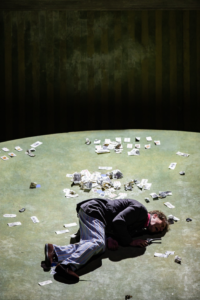 photos by Cory Weaver and Andrew Cioffi
photos by Cory Weaver and Andrew Cioffi
The Queen of Spades
Lyric Opera of Chicago
Civic Opera House, 20 N. Wacker Drive
ends on March 1, 2020
for tickets, call 312.827.5600 or visit Lyric Opera
for more shows, visit Theatre in Chicago
